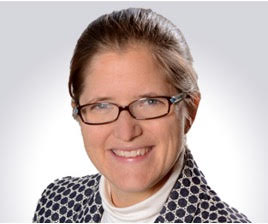
Our nation is getting sicker. Research by the Employee Benefit Research Institute found that the number of people who spend $100,000 or more each year on healthcare increased by 50% between 2013 and 2021. The majority of conditions most represented in these costs included “nervous system disorders, heart disease, respiratory conditions, cancer, and musculoskeletal conditions.” Nearly half of all annual healthcare spending in the U.S. comes from just five percent of the population.
The Impact of Health Literacy
Often, employees who garner the highest healthcare costs are unaware of the benefits available to them and don’t fully understand how to navigate our nation’s highly complex healthcare system. This is referred to as “low health literacy” and research shows it can cost employers and insurers $3.4 billion in additional administrative costs.
Individuals with low health literacy typically use numerous healthcare services but lack care continuity. They may go to a pharmacy-based clinic for vaccinations, to a grocery store clinic for the flu, and to an ENT for an allergy. While these providers may help at the moment, none are connecting the dots of the individual’s entire continuum of care.
Increasingly Sicker Workforce
The lack of health literacy and siloed care puts individuals at greater risk for higher costs and poor outcomes, especially those with chronic conditions. In addition to higher healthcare costs, poorly managed chronic diseases can impact employer costs through absenteeism, presenteeism, and reduced productivity. Research shows that reduced productivity from poorly managed chronic diseases has reached $36.4 billion per year. All in all, employers incur approximately $575 billion in additional costs each year due to employees’ poor health.
Many big and small companies, 83% and 58% respectively, provide wellness programs to encourage their employees to be more involved in their healthcare. Although these programs might have a positive impact initially, participation tends to decrease over time. Furthermore, wellness programs alone do not improve health literacy or assist employees in utilizing their healthcare benefits effectively.
A New Approach
Many forward-thinking companies are taking a different approach to employee health by focusing on high-risk individuals who incur the most significant costs. These individuals are then assigned a personal health nurse (PHN) who acts as a partner in the employee’s health journey. It’s important to note that PHNs are not the same as “care navigators,” who are non-clinical staff working via call centers. When an employee contacts a care navigator, the person answering the phone is typically different each time. The care navigator has no personal relationship with the employee, only the information displayed on their screen.
PHNs are registered nurses who take a holistic approach to improving an individual’s health challenges. They work closely with the individual to enhance their health literacy and guide them through the healthcare system and its benefits. In the best programs, each employee is assigned a PHN, allowing the nurse to establish a personal relationship with the employee. This connection fosters accountability and support for the employee’s everyday needs.
Here are some examples of how a PHN can assist employees:
- Arranging for a walker to be delivered to the employee’s home
- Connecting a diabetic employee to a diabetes support group
- Helping the employee find a medication that is covered by their plan
- Facilitating quicker access to in-demand specialists
- Assisting the employee in communicating their symptoms to their doctor
- Explaining the employee’s diagnosis and the prescribed treatment
- Coordinating with the employee’s primary care provider
Better Care Management
As part of a holistic care approach, PHNs reach out to high-risk employees based on their risk level, which considers their disease burden, care fragmentation, and ability to manage their conditions. PHNs then work with each member to develop a personalized care plan that addresses their specific needs. A vital part of a holistic care program is identifying any obstacles that may impede success and then collaborating with the employee to overcome them.
Education is another important element of an effective program. PHNs educate employees on lifestyle and other factors that contribute to their condition, assist them in setting personal goals, and help them create a personalized action plan.
PHNs also promote effective health management and resource utilization by ensuring that employees have a primary care provider, encouraging them to work with their providers to manage their disease, and providing access to resources and support. Additionally, PHNs may liaise with primary care providers to ensure coordinated care.
It’s Time to Act
Studies have found that nearly half of individuals with low health literacy have completed a college education, indicating the intricate nature of our healthcare system. This highlights the pressing need for employers to aid employees in effectively navigating their healthcare and benefits. Choosing a holistic program that leverages PHNs can help them do just that, resulting in reduced costs and a healthier, more productive workforce.
About Mary Bacaj
As President of Value-Based Care (VBC) for Conifer Health Solutions, Mary Bacaj is responsible for leading the company’s business unit that delivers population health management and financial risk management services to more than 250 organizations. Conifer VBC is uniquely positioned as a partner to employers & unions, risk-bearing healthcare providers and health plans.
Bacaj joined Conifer Health in 2014 as Vice President of Strategy to help the company identify and implement solutions that ensure individuals receive the right care at the right time, while healthcare providers are aligned to improve the health of the population. She is a recognized subject matter expert in pay-for-performance programs, hospital and physician alliances and healthcare reform.
Prior to joining Conifer Health, Bacaj was an Engagement Manager at McKinsey & Company, where she worked with senior executives at health systems and health technology companies on strategic challenges, such as population health management, hospital and physician mergers and acquisitions, and risk-based contracting.

